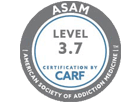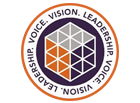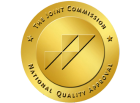The first step in recovering from any substance addiction is detoxification – detox for short. A detox means ceasing the use of an illicit substance and allowing it to exit the body.
But for many, the prospect of unpleasant – or even deadly – withdrawal symptoms is a major roadblock to recovery. For this reason, many undergo what is known as a medical detox, also known as a medically-assisted detox.
In these situations, a person checks themself into a treatment center, where they receive around-the-clock care from medical professionals. There, those professionals administer special medications to an addicted person to reduce or eliminate serious withdrawal symptoms.
The idea is that mitigating these unpleasant physical symptoms helps set the stage for successful treatment of the psychological issues underlying the addiction.
Read on to learn more about this vital first step in the recovery process.
How Does a Medical Detox Work?
If you decide to undergo a medically-assisted detox, the first step will be taking a comprehensive assessment given by a medical professional.
This assessment may include the following:
- Evaluation of your medical history
- Physical examination
- Review of any history of substance abuse
- Screening for co-occurring mental illnesses
- Testing for the presence of infectious diseases
The assessment results will determine the specifics of your treatment program.
Once the patient settles in and learns what to expect, the next phase of treatment, stabilization, begins.
Stabilization is at the heart of a medical detox.
During this phase, all substance abuse ceases and patients are provided with special detox medications to reduce withdrawal symptoms. These detox meds not only mitigate withdrawal symptoms but also can help restore normal brain function.
Stabilization can take anywhere from several days to a couple of weeks. After this comes the final phase of medical detoxification: treatment planning.
During detox, the process cleanses any drugs from the person’s system. Once the worst is over, the person is able to learn more about their actual treatment program. Along with a counselor, they can consider treatment options to sustain sobriety.
Medically-Assisted Detox vs Observational Detox
For less severe substance use disorders a person may choose not to undergo a medical detox. There are multiple forms of detoxification aside from medically-assisted detox. If a medical assessment determines your withdrawal symptoms are not likely to be life-threatening, an observational detox may be a useful alternative.
Both kinds of detoxes may involve the use of medications to manage withdrawal symptoms but those undergoing observational detoxes receive medication via daily visits to an outpatient facility. Rather than receiving 24/7 around-the-clock medical attention from professionals, the person may instead be watched over by a trusted friend or relative.
Observational detoxes emphasize the positive impact a person’s loved ones can have when that person is trying to get sober.
They are typically best for those with mild-to-moderate withdrawal symptoms who do not wish to have their lives disrupted by checking into an inpatient program.
For those with significant or life-threatening withdrawals, serious co-morbid illnesses, or those who are suicidal or homicidal, a medical detox is safer.
List of Detox Medications
There are a variety of medications used in medical detoxes, many of which are not only used in detox.
Some of the most common detox medications include:
- Methadone
- Buprenorphine
- Clonidine
- Lofexidine
- Suboxone
Keep in mind this is by no means an exhaustive list. Other options include antidepressants and anticonvulsants for anxiety and seizures, respectively.
Methadone
First pioneered in the 1960s, methadone is the oldest medical detox medication. It reduces withdrawal symptoms associated with opioid use disorder. However, there is some potential for abuse, so medical supervision is required. Brand names include Dolophione and Methadose.
Buprenorphine
Like methadone, buprenorphine also helps to alleviate opioid cravings and withdrawal symptoms but is easier to obtain due to less regulation. It also has a ceiling effect methadone doesn’t have – repeat doses don’t lead to greater euphoria. As a result, this lessens the chance of abuse. Brand names it is also sold under include Zubsilv, Subutex, Probuphine, Cassipa, Bunavil, and an injectable called Sublocade.
Clonidine
Clonidine is a medication used to reduce symptoms of opioid withdrawal such as tremors, sweating, and anxiety. However, it is not an opioid substitution treatment. For that reason, Clonidine should not be used while opioids are still in the system.
Lofexidine
Lofexidine helps in managing opioid withdrawal symptoms such as stomach cramps, pounding heart rate, muscle aches, and excessive yawning.
Suboxone
Suboxone is a combination of buprenorphine and naloxone (brand name Narcan). It counteracts opioid withdrawal symptoms and the naloxone component acts to prevent abuse.
Medical Detox vs. Medication-assisted Treatment (MAT)
As addiction is a chronic disease, certain treatment centers may continue providing some of the drugs above outside of a medical detox. In fact, you can ask your doctor if you can use detox medications for opioid and alcohol use disorder for weeks or months after detox to help prevent relapse. When provided in conjunction with therapy, this combined approach is known as medication-assisted treatment (MAT). Studies show it is particularly effective for treating opioid use disorder.
Because opioids and alcohol are two of the most common substance addictions that require medical detox and medication-assisted treatment (MAT), that is what these drugs most commonly treat.
At the moment, there are no FDA-approved crystal meth detox medications, benzo detox medications, or detox meds, especially for other substance use disorders. However, if you have one of these SUDs, that should not discourage you. There is a wide variety of medications that can be used in an off-label manner to treat withdrawal symptoms.
Detox Medications That Require a Taper
Ironically, many – though not all – detox medications can themselves lead to withdrawal if stopped suddenly. For instance, heroin detox medications such as methadone can produce powerful feelings of euphoria. These euphoric effects can, without proper medical supervision, open the door to abuse.
For this reason, medical experts recommend tapering, or gradually reducing the use, of detox drugs like methadone.
Other detox medications that may require a taper include:
- Buprenorphine
- Naltrexone
- Lorazepam
- Clonidine
- Diazepam
- Buspirone
Detox medications that generally do not require a taper include carbamazepine lofexidine and suboxone.
Note: the information on this web page does not replace or supplement information provided by a licensed medical professional or doctor. If you are seeking medical advice for a substance use disorder, please contact a licensed medical professional or follow up with your primary care physician.
Treatment Options After Medical Detox
Medical detoxes are often an important first step to getting treatment but they are no replacement for the treatment itself. If you are dealing with a substance use disorder, it is essential you seek professional treatment.
Treatment for substance abuse takes place along an entire spectrum of care. Along that entire spectrum are various behavioral therapies, support groups, and the potential use of medically-assisted treatment (MAT).
These levels of treatment are, in order, as follows:
- Inpatient Treatment
- Partial Hospitalization Programs (PHPs)
- Intensive Outpatient Programs (IOP)
- Outpatient Treatment
- Sober Living
Inpatient Treatment
Also known as residential treatment, inpatient treatment is the most intensive option for treating a substance use disorder. Addiction professionals care for the patient around the clock.
These programs typically last 30 days, 60 days, or 90 days. They may last longer for particularly severe cases, however.
Partial Hospitalization Programs (PHPs)
Partial hospitalization programs, or PHPs, serve as a bridge for those who have completed detoxing and inpatient treatment, but may not be totally ready for an outpatient program. During treatment, you’re allowed to live at home, making them less disruptive than residential treatment.
Someone in a PHP usually attends therapy 6 hours a day. Programs can last anywhere from a couple of weeks to several months. PHPs are sometimes combined with IOPs.
Intensive Outpatient Programs (IOP)
A typical intensive outpatient program (IOP) consists of 9 to 15 hours of individual or group therapy sessions per week. This program usually spreads out over four or five weekdays and amounts to fewer weekly hours than seen in a PHP. Many treatment centers provide intensive outpatient rehab in the morning or evening, allowing guests to continue meeting their responsibilities at work, school, and home.
Outpatient Treatment
Outpatient treatment is the final phase of treatment in most cases. Typically, outpatient is a part of continuing care for those who leave rehab but aren’t quite ready to fully re-enter society. As such, it’s less intense than inpatient treatment, partial hospitalization, and intensive outpatient care.
Sober Living
Sometimes people discharged from treatment end up back in the environments where their substance use disorder began, causing them to relapse.
For these people, a sober living home or sober living environment (SLE) is a good option. These are places where people in recovery can live away from the temptations and distractions of their home environments. They emphasize sobriety, mutual support, and participation in ongoing therapy. Sober living homes serve as a transition point for those who no longer need significant treatment but aren’t quite ready to fully re-enter society.
Reach Out
Addiction is a serious disease but can be overcome with proper treatment. If you or a loved one struggles with a substance use disorder you don’t have to face it alone. Contact us today at 888-907-0898 to speak with a representative who can help you determine your treatment options and help you begin your journey on the road to recovery.
References:
- https://www.ncbi.nlm.nih.gov/pmc/articles/PMC4014033/
- https://www.ncbi.nlm.nih.gov/pmc/articles/PMC28539761
- https://www.aafp.org/pubs/afp/issues/1999/0915/p1175.html
- https://www.mayoclinic.org/drugs-supplements/naltrexone-oral-route/precautions/drg-20068408?p=1
- https://www.mayoclinic.org/drugs-supplements/buspirone-oral-route/precautions/drg-20062457
- https://www.sciencedirect.com/science/article/pii/S0376871617301874
- https://www.ncbi.nlm.nih.gov/pmc/articles/PMC3150159/
- https://pubs.niaaa.nih.gov/publications/arh22-1/44-46.pdf
- https://www.ncbi.nlm.nih.gov/books/NBK64109/
- https://www.ncbi.nlm.nih.gov/pmc/articles/PMC3633201/pdf/nihms401792.pdf
























